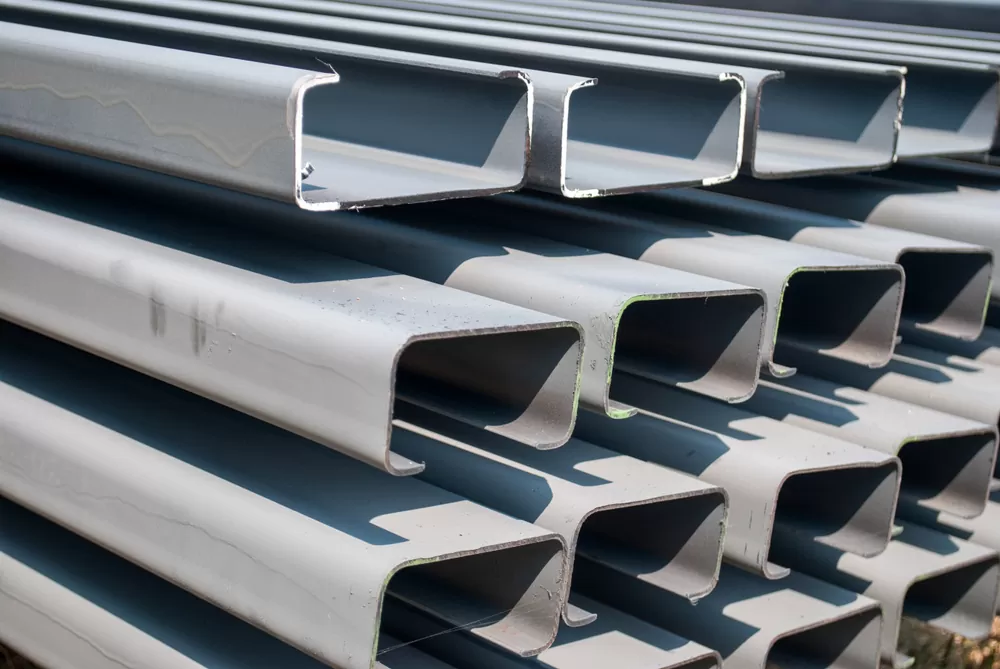How Does Professional Ceiling Drying Prevent Mold Growth?

Water damage in homes and commercial properties is not just an inconvenience—it’s a potential health hazard. One of the most common consequences of water intrusion is mold growth, which can develop quickly on ceilings, walls, and other hidden areas. Understanding how professional ceiling drying works and why it is essential in preventing mold growth is crucial for property owners. In this article, we’ll explore the process, benefits, and importance of timely intervention in water-damaged spaces.
What Is Ceiling Drying and Why Is It Important?
Ceiling drying is a specialized process performed by trained professionals to remove moisture from ceilings after water damage caused by leaks, floods, or plumbing failures. Moisture can seep into ceiling cavities, drywall, and insulation, creating an ideal environment for mold spores to thrive. Unlike ordinary fans or dehumidifiers, professional ceiling drying uses industrial-grade equipment and techniques designed to target water in areas that are difficult to reach.
Proper ceiling drying is essential because untreated moisture can compromise structural integrity, discolor surfaces, and encourage the growth of mold and bacteria. According to experts at Structural Drying Australia, addressing water-damaged ceilings quickly prevents further damage and maintains indoor air quality.
How Does Moisture Lead to Mold Growth?
Mold growth occurs when surfaces remain damp for extended periods. Ceilings and walls that have absorbed water during floods, leaks, or even minor plumbing issues can retain moisture in hidden pockets. Warmth and humidity accelerate the proliferation of mold spores, which can start growing within 24 to 48 hours if conditions are favorable.
The longer a ceiling remains wet, the more likely it is that mold will develop. This is why early and effective ceiling drying is critical. Professional teams use moisture detection tools to identify damp spots and monitor the drying process, ensuring no area is left untreated. Similarly, wet wall drying is applied to vertical surfaces that have absorbed water, further preventing mold growth on walls adjacent to ceilings.
What Techniques Are Used in Professional Ceiling Drying?
Professional ceiling drying involves a combination of techniques designed to remove water safely and efficiently:
-
Moisture Assessment: Technicians use moisture meters and thermal imaging cameras to locate water trapped in ceilings and walls.
-
Controlled Airflow: High-velocity air movers circulate dry air to speed up evaporation without causing additional damage to materials.
-
Dehumidification: Industrial dehumidifiers extract water vapor from the air and materials, maintaining low humidity levels to prevent mold growth.
-
Targeted Drying: Specific methods, such as injecting dry air behind ceilings or using drying mats, ensure deep moisture removal from cavities and insulation.
-
Monitoring: Continuous monitoring ensures that the drying process is effective and that moisture levels reach safe thresholds before the project is considered complete.
Structural Drying Australia emphasizes that relying solely on conventional fans or heaters is insufficient, as these methods often fail to remove hidden moisture that feeds mold growth.
How Does Wet Wall Drying Complement Ceiling Drying?
While ceilings are prone to water accumulation from above, walls can also absorb water from leaks or flooding. Wet wall drying is the process of removing moisture from wall cavities, baseboards, and other vertical surfaces. By combining ceiling and wet wall drying, professionals ensure a comprehensive approach to water damage restoration.
Moisture trapped in walls can migrate to ceilings and vice versa, creating an interconnected risk for mold. Professional drying methods create a balanced environment where both horizontal and vertical surfaces are dried simultaneously. This integrated approach significantly reduces the likelihood of mold growth and structural deterioration.
How Does Early Intervention Reduce Mold Risk?
Time is critical when it comes to water damage. Immediate action prevents small leaks or spills from turning into major mold infestations. Early professional ceiling drying can:
-
Prevent mold spores from colonizing damp surfaces
-
Protect insulation and structural elements from decay
-
Reduce long-term repair costs by avoiding extensive restoration
-
Maintain healthy indoor air quality for residents or employees
Delaying water removal gives mold a chance to spread, making remediation more complicated and expensive. Professionals at Structural Drying Australia stress that even minor water exposure can lead to mold if not treated promptly.
Can Homeowners Handle Ceiling Drying Themselves?
Many homeowners attempt DIY drying methods, such as using household fans or heaters. While these may provide temporary relief, they rarely address hidden moisture. Water trapped in ceiling cavities or behind drywall is difficult to detect and even harder to dry effectively without professional tools.
Attempting ceiling drying without proper equipment can result in:
-
Mold growth due to incomplete drying
-
Warping or cracking of ceilings
-
Damage to insulation or electrical components
Professional ceiling drying ensures that all moisture is removed safely and thoroughly, significantly reducing the risk of mold development.
What Are the Health Risks of Mold from Water-Damaged Ceilings?
Mold exposure can lead to a variety of health issues, particularly for individuals with allergies, asthma, or compromised immune systems. Common symptoms of mold exposure include:
-
Sneezing, coughing, and congestion
-
Skin irritation and rashes
-
Eye irritation and headaches
-
Respiratory issues in severe cases
Preventing mold through professional ceiling and wet wall drying is not just about preserving property—it is a critical step in protecting the health of occupants.
How Long Does Professional Ceiling Drying Take?
The duration of ceiling drying depends on factors such as:
-
Extent of water damage
-
Ceiling material and insulation type
-
Environmental conditions like temperature and humidity
-
Accessibility of affected areas
Typically, professional teams can complete the drying process in a few days to a week, depending on severity. Continuous monitoring ensures that the process is complete, leaving no hidden moisture that could encourage mold growth.
How Does Structural Drying Australia Ensure Complete Moisture Removal?
Structural Drying Australia uses state-of-the-art equipment and industry best practices to achieve complete moisture removal. Their technicians employ advanced moisture detection tools, air movers, and dehumidifiers to create a controlled drying environment. Additionally, they monitor the drying process continuously, adjusting airflow and humidity to ensure all surfaces are dried thoroughly.
By combining ceiling drying and wet wall drying, they address both horizontal and vertical moisture intrusion, ensuring comprehensive protection against mold growth. Their professional approach minimizes long-term damage and helps homeowners maintain safe, healthy living conditions.
Why Choose Professional Ceiling and Wet Wall Drying?
Investing in professional ceiling and wet wall drying provides peace of mind. Benefits include:
-
Effective prevention of mold growth
-
Preservation of structural integrity
-
Protection of indoor air quality
-
Faster and safer restoration compared to DIY methods
Ignoring water damage or attempting to dry ceilings and walls without proper equipment often leads to costly repairs and health risks. Professional intervention ensures complete drying and prevents future complications.
Conclusion: Prevent Mold Growth with Professional Drying
Water damage is more than an inconvenience—it’s a serious threat to both property and health. Professional ceiling drying and wet wall drying are essential in preventing mold growth and preserving the structural integrity of your home or commercial space. With early intervention and the expertise of Structural Drying Australia, property owners can effectively eliminate moisture, protect indoor air quality, and avoid costly mold remediation in the future. Timely action ensures your ceilings and walls remain dry, safe, and mold-free.
FURTHER READING...
How can the Autoimmune Paleo Diet help manage autoimmune conditions?
October 24, 2025
How Do You Choose the Right Braided Wig for Your Look?
October 18, 2025
How do kurti manufacturers set their wholesale prices?
October 4, 2025
Can Beginners Use Tattoo Needle Cartridges?
September 27, 2025
Latest - post
Category
- ! Без рубрики (1)
- 1k (8)
- 1win-oyna (1)
- 1win-uz-kirish.org (1)
- 1x (1)
- 1xbet (1)
- 1xbet Casino AZ (8)
- 1xbet Korea (1)
- 1xbet russian (9)
- 1xbet russian1 (2)
- 1xbet-india-online.in3 (1)
- 1xbet-kirish.com (1)
- 1xbetsenegal.win (1)
- 22bet Österreich (1)
- a16z generative ai (4)
- abukingcasinoportugal.com (1)
- acrataofficial.com (1)
- adonnasbakery.net (1)
- Ai News 2025 (2)
- akss.uz (1)
- americanfoodshop.it (1)
- amonbet.us (1)
- amonbetuk.uk (1)
- answer (1)
- answers (2)
- appleoffortune.net (1)
- ateliermasomi.com (1)
- aviamasters-games.net (1)
- aviatorbet.co.uk (1)
- ballonixgame.win (1)
- basswin.us (1)
- bcgamedownloadandroid.com (1)
- bchsfoundation.org (1)
- bdmbetitalia.com (1)
- bdmbetportugal.com (1)
- betbeastaustralia.com (1)
- betonred-australia.net (1)
- betonred-cz.org (1)
- betonreddeutschland.com (1)
- betonredespana.net (1)
- betonredfrance.com (1)
- betonreditaly.net (1)
- betonredpl.win (1)
- betonredportugal.net (1)
- betsafecasino.uk (1)
- betsafeperu.org (1)
- betting (1)
- bigbassbonanza.cc (1)
- bigbasssplash.cc (1)
- bigbasssplash.com.es (1)
- bigbeverage.net (1)
- billionairespincz.com (1)
- billionairespinespana.com (1)
- bizzo.at (1)
- blog (155)
- bookhippo.uk (1)
- Bookkeeping (7)
- bragdonhousebb.com (1)
- Business (19)
- Buy Semaglutide (1)
- candy-spinz-casino.com.de (1)
- candyspinz.us (1)
- candyspinzespana.com (1)
- cascbar.co.uk (1)
- cashorcrash.org.uk (1)
- cashwinosterreich.com (1)
- casino (19)
- casino en ligne argent reel (1)
- casino en ligne fr (10)
- casino utan svensk licens (1)
- casino zonder crucks netherlands (11)
- casino-days.us (1)
- casinoinfinityespana.com (1)
- casinonicaustralia.net (1)
- CH (1)
- chicken-road-game.org.uk (1)
- chicken-road-it.org (1)
- chicken-road-online.net (1)
- chicken-road2.co.uk (1)
- chicken-road2.in (1)
- chicken-road2.us (1)
- chickencross-es.com (1)
- chickencrossavis.com (1)
- chickencrossgame.co.uk (1)
- chickengamegambling.us (1)
- chickenroadavis.net (1)
- chickenroadespana.com (1)
- chickenroadgame.cc (1)
- CIB (1)
- ciispecialabilityjobs.in (1)
- clovermagic.us (1)
- clovermagiccasino.us (1)
- cresus-casino.us (1)
- crownplaygreece.com (1)
- czdrops25monobrands (1)
- debradeleiwharf.co.uk (1)
- destination-fremtiden.dk (1)
- drivein.hr (1)
- dropthebossgame.org.uk (1)
- EC (1)
- emmeessentials.co (1)
- Environment (10)
- eyeofhorus.cc (1)
- Forex Trading (3)
- fortuneoxplataforma.com (1)
- funkyaardvark.co.uk (1)
- garden2table (1)
- gates-of-valhalla.com (1)
- gatesofolympusslot.cc (1)
- gatesuperscatter.org (1)
- godsgypsy.com (1)
- gopbeavercounty.org (1)
- grandearmadio.com (1)
- heyspincasino.uk (1)
- hollywoodbetsmz.com (1)
- Home (963)
- hotslotspl.net (1)
- hrcarers.org.uk (1)
- hudsunmedia.com (1)
- huffnmorepuff.us (1)
- imvest.it (2)
- irwincasino-pl.com (1)
- itreadynetwork.org (1)
- ivibetcasino.us (1)
- ivibetkasyno.net (1)
- jamesbrausch.com (1)
- jonbet.br.com (1)
- kampo-view.com (1)
- kycoroners.com (1)
- lalabetnederland.net (1)
- legacyofdeaddemo.com.de (1)
- lepharaohslot.us (2)
- locandadelcolonnello.it (1)
- lucky-mister.net (1)
- lucky7-casino.us (1)
- luckydayscasinonz.com (1)
- luckydaysireland.com (1)
- Marketing (11)
- marniegrundman.com (1)
- Medical (11)
- megajokernetent.com (1)
- megajokerslot.net (1)
- Mono-brand (3)
- Monobrand (17)
- monsterslots.uk (1)
- mostbet (1)
- mostbet ozbekistonda (1)
- mostbet-azerbaycan-giris (1)
- mostbet-oyna (1)
- mrvegasuk.uk (1)
- NEW (1)
- News (3)
- nextstageco.com (1)
- NV Casino Schweiz Bewertungen auf TrustPilot (1)
- ocbombers.com (1)
- oddboy.nz (1)
- olympecasino.us (1)
- olympecasinofrance.net (1)
- Omegle (6)
- Omegle cc (6)
- Online Casino (2)
- oscarspin.us (1)
- oscarspinespana.com (1)
- oscarspinportugal.com (1)
- oshicasino.us (1)
- PariMatch India (1)
- pdrc (1)
- penaltyshootout.us (1)
- pikarimai.co.nz (1)
- pinupazerbaycan.win (1)
- Pirots SE (1)
- playojo.games (1)
- playregalfrance.net (1)
- playuzu.games (1)
- plinko (12)
- plinko-official.com (2)
- plinkogamecasino.net (1)
- plinkogamedownload.in (1)
- plinkorecensioni.org (1)
- Post (20)
- prava-osi.hr (1)
- ragingrhino.org (1)
- ready_text (7)
- Relationship (10)
- Review (3)
- reviewer (48)
- ricordiamocidellinfanzia.it (1)
- ripper-casino.us (1)
- rippercasinoespana.com (1)
- rjlprecisioneng.co.uk (1)
- roll-x-game.net (1)
- rollx-game.org (1)
- Roobet Official Website in India (1)
- roobetnz.com (1)
- rubyfortune.world (1)
- Semaglutide Online (1)
- slots-magic.com.de (1)
- Sober living (6)
- space-interiors.it (1)
- spacexy.co.uk (1)
- spain (1)
- spin-casino-chile.net (1)
- spinangacasinogreece.net (1)
- spincasino-es.com (1)
- spincasinoromania.com (1)
- spingranny.us (1)
- spingrannyportugal.com (1)
- spinmama-de.com.de (1)
- spinmama-pt.com (1)
- spinmamaespana.com (1)
- spinmamafrance.net (1)
- spinmamaitaly.net (1)
- stockx.co.nz (1)
- sunofegypt3.us (1)
- superacedemo.net (1)
- sweet-bonanza-germany.com (1)
- sweetbonanzaslot.us (1)
- tedxmarseille.com (1)
- test (1)
- tfsvl.co.uk (1)
- timclarkband.com (1)
- tsarscasinoaustralia.net (1)
- tuopreventivatore.it (2)
- twiceastranger.net (1)
- twincasino-sv.com (1)
- twincasino.us (1)
- uk (1)
- uncategorized (31)
- uniquecasinoespana.net (1)
- vegasino-ie.com (1)
- Vegastars Casino Australia (1)
- very-well-casino.org.uk (1)
- wbcommunitytrust.co.uk (1)
- wbcommunitytrust.co.uk2 (1)
- Wettigo Suisse – agenceapocope.com (1)
- wildrobincasino-de.com (1)
- wildrobinfrance.com (1)
- win-unique-casino.org (1)
- winvegasplus.org (1)
- yayas.uk (1)
- Новости Форекс (3)
- сателлиты (2)
- сеточный домен (4)
- сеточный домены (1)
- 카지노사이트 – onlifezone.com (1)
- 카지노사이트추천 (1)












